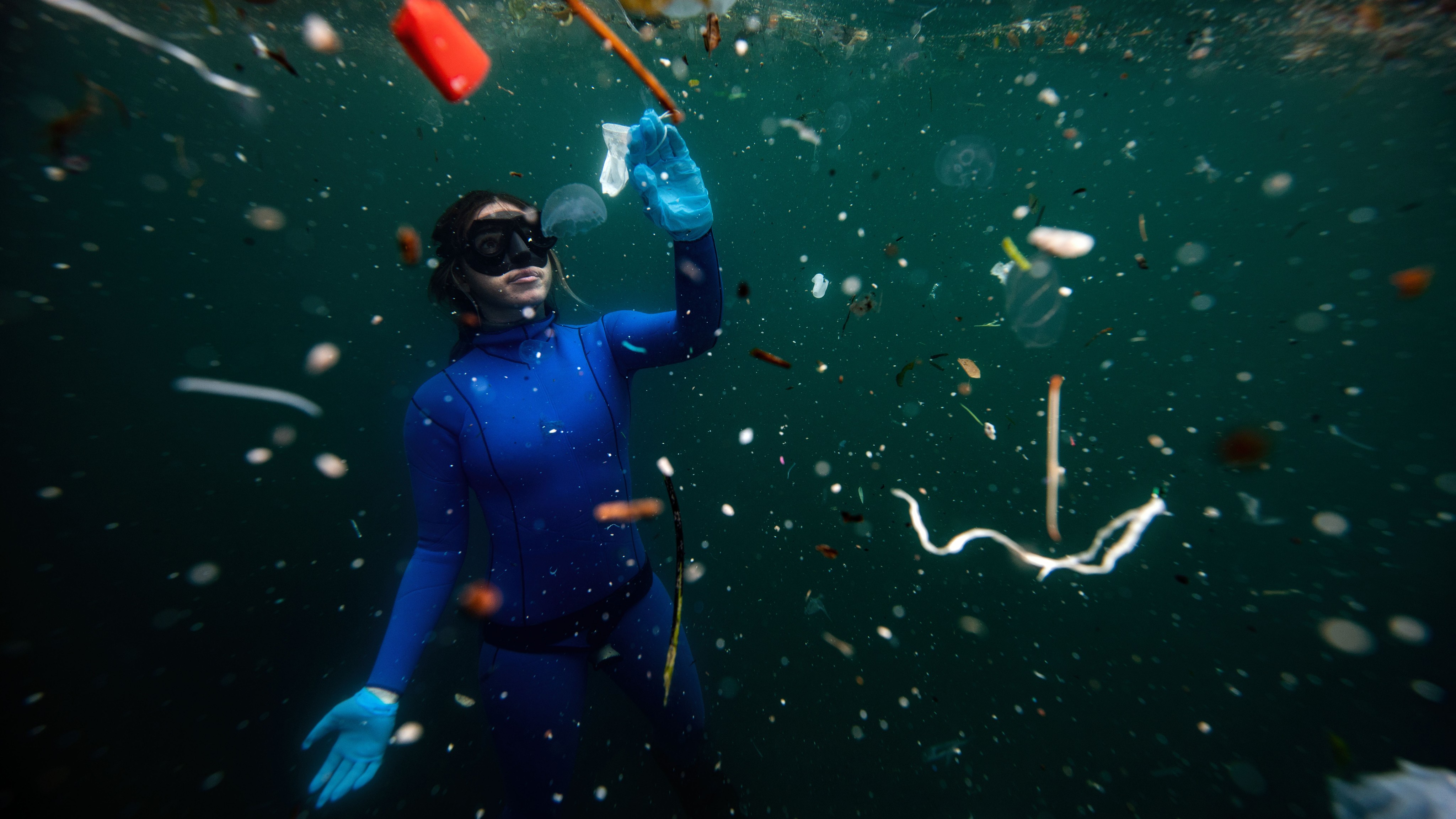Fashion's Part in Polluting Our Oceans
Global waters are littered with microfibers from clothing that end up on the ocean floor. How can we fight against this ever increasing pollution?

"Two years ago, I sailed with eXXpedition Round the World [a mission to study plastic pollution in the oceans] in the South Pacific Ocean. We analyzed the water, and it was a shock—there were a lot of polyamide and cellulose microfibers in the samples," recalls Carry Somers, co-creator of Fashion Revolution, a movement designed to raise awareness and share information about the impacts of the textile industry on the environment. It may be difficult to see the link between our clothes and the pollution of the oceans, however, the textile microfibers spit out by washing machines are nevertheless gradually invading the marine abyss.
According to a scientific study conducted last year, 35 to 72 percent of the fibers in the samples taken from the marine environment were of natural origin (cotton and wool) or derived from processes using natural fibers (such as cellulose for viscose, for example), compared to 14 to 50 percent of synthetic origin (polyester, nylon, acrylic...).
"In non-organic cotton fibers there are pesticides and harmful chemicals, so even natural microfibers are dangerous for the oceans," says Thomas Stanton, a researcher at Loughborough University in the United Kingdom, who studies the pollution caused by textile microfibers in the oceans and rivers.
But in concrete terms, how do these microfibers end up in the sea? "The fibers, depending on their size, are transported by different routes: the shortest fibers are transported by air...longer [ones] via wastewater," according to the study. They end up in wastewater because of friction that occurs when we wash our clothes.
And according to the Ellen McArthur Foundation, the cumulative amount of microfibers entering the ocean between 2015 and 2050 could exceed 22 million tons.
"These textile microfibers are found in very large quantities in the seas and oceans. But nature is not able to absorb them. These fibers are eaten by fish and replace their food," warns Henri Bourgeois-Costa, Director of Public Affairs for the Tara Ocean Foundation, pointing out the constant increase of this pollution.
"Our consumption of clothing is increasing so we end up with more microfibers in the oceans. And even if natural microfibers could degrade faster than synthetic microfibers, they don't belong there—the oceans are not adapted to deal with this problem," says the specialist in the circular economy.
Stay In The Know
Get exclusive access to fashion and beauty trends, hot-off-the-press celebrity news, and more.
So how to deal with this growing problem? "We must buy less, wash our clothes less, not wash them at more than 30° Celsius, or reduce the speed of spinning," explains Carry Somers. But efforts must not come only from consumers. "Brands must also reveal what's in their clothes and list all the chemicals that are in them," the activist continues.
But that's not all. For Géraldine Poivert, president and co-founder of the consulting firm Reset, technological innovations also have their role to play. "We need to find solutions at the industrial level. We need to work on fabrics so that they wear out less and fray less during washing, to filter water in washing machines and water treatment plants," she says. Governments also need to take action. In France, the law addressing the fight against waste and the circular economy (Agec) now requires new washing machines sold in the country to be equipped with a microfiber filter starting January 1, 2025.
"We need more sobriety, innovation, public investment, and collective industrial work. The textile industry has a date with its future," Poivert concludes.
Chloe Cohen is a journalist and host of the responsible fashion podcast Nouveau Modele based in Paris.
-
 James Middleton Shares Why He Was "Breathless and Flustered" During Meeting With Queen Elizabeth
James Middleton Shares Why He Was "Breathless and Flustered" During Meeting With Queen Elizabeth"I heard a snort of laughter and looked past the Queen to see everyone in the room stifling their giggles."
By Kristin Contino
-
 This Modern Princess Will Break a 600-Year-Old Tradition When She Takes the Throne
This Modern Princess Will Break a 600-Year-Old Tradition When She Takes the ThronePrincess Ingrid Alexandra of Norway will follow in a long-ago ruler's footsteps.
By Kristin Contino
-
 Hailey Bieber's "Favorite Jacket" Is Actually One She Designed
Hailey Bieber's "Favorite Jacket" Is Actually One She DesignedIt's a piece for husband Justin Bieber's new brand.
By Halie LeSavage